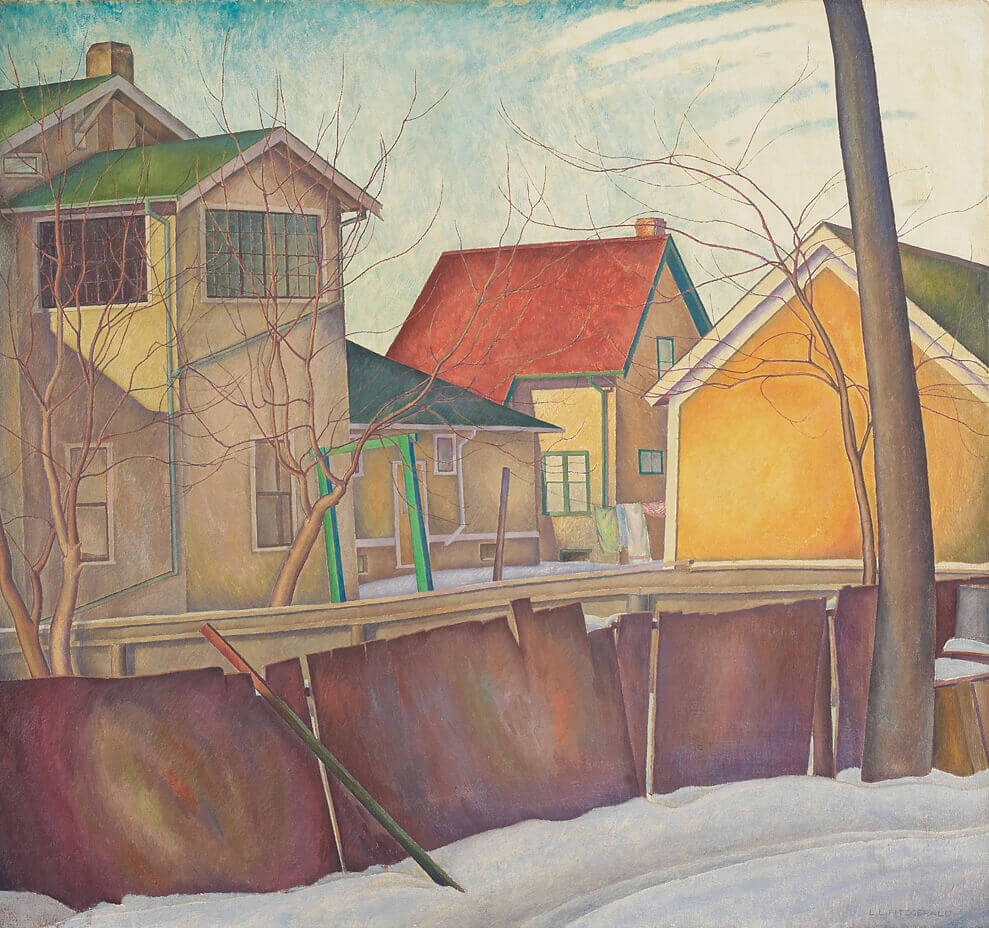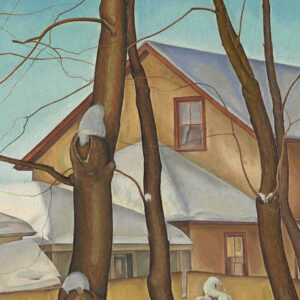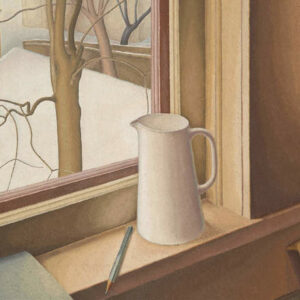Pritchard’s Fence c. 1928

Lionel LeMoine FitzGerald, Pritchard’s Fence, c. 1928
Oil on canvas, 71.6 x 76.5 cm
Art Gallery of Ontario, Toronto
FitzGerald looked no farther than his own Winnipeg backyard to find Pritchard’s Fence. Under his close scrutiny and painstaking workmanship, the jumble of buildings and rickety fence open up an array of visual and compositional possibilities, turning the ordinary into the extraordinary. By finding beauty and serenity in a typical Winnipeg neighbourhood, FitzGerald created what was to become one of his most beloved paintings.


His first painting of this subject was probably the smaller and less-realized Garage and House, 1928, which gives a complete view of the garage on the right. In the larger Pritchard’s Fence, the artist achieves greater dynamism by shifting his viewpoint slightly left to create a more close-cropped view. A detailed pencil study, Backyards, conforms in most ways to the final picture. His working method was to then paint “the whole picture from nature making a most detailed drawing on the canvas before beginning the painting.”
Pritchard’s Fence may have taken FitzGerald as long as a year to paint and required considerable patience. In order to balance the tonal harmonies, the artist worked each discrete area of canvas to completeness before shifting to another zone. As a result, in close-up each section of the fence appears to form an abstract painting on its own. The smooth surface of the work is dominated by linear elements of the composition. A spatial ambiguity created by the relationship of the buildings to each other keeps the eye moving between separate parts of the composition.
Pritchard’s Fence was publicly exhibited for the first time only five years before FitzGerald died. The picture must have held special significance for the artist. It hung in his home, where he could look at it on a continual basis, as seen in a photograph taken around 1940 before the painting was acquired by the Art Gallery of Ontario in 1951. Certainly Pritchard’s Fence represents the most finished statement of FitzGerald’s early maturity, merging aspects of both drawing and painting.

 About the Author
About the Author
 More Online Art Books
More Online Art Books
 Acknowledgements
Acknowledgements